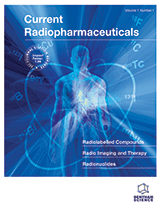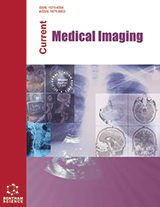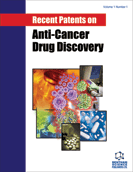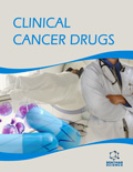Abstract
Infections by Candida spp and Aspergillus spp are the most common causes of invasive fungal infections. The main diagnostic methods are blood culture, and antigen-based techniques, but they are still suboptimal, leading to delays in the initiation of therapies and resulting in high mortality rates despite the availability of several new antifungal agents. The aim of this work was the development, synthesis and evaluation of a potential radiopharmaceutical enable the rapid and accurate diagnosis by scintigraphic images of fungal infection using caspofungin, a lipopeptide, radiolabelled with 99mTc.
Caspofungin was radiolabeled with 99mTc-tricarbonyl precursor. The complex was assessed for in vitro stability, lipophilicity, plasma protein binding and plasma stability. Biological evaluation was conducted in four groups of CD1 female mice. G1 healthy animals, G2 was induced sterile inflammation with turpentine oil. G3 and G4 were infected with Candida albicans and Aspergillus Niger. Scintigraphicimages were acquired before sacrifice.
The Caspofungin – tricarbonyl complex was obtained with RCP higher than 95%, it was stable in labeling milieu for at least 20 hours, and in plasma for 4 hours. Challenge with competitive agents showed no ligand exchange during 200 min. The product was well tolerated by mice and showed mainly hepatobiliar excretion. Lesion uptake was markedly higher in infected tissues than in sterile inflammation. Scintigraphic images clearly distinguished inflammation from infection.
The high RCP yields and in vitro stability, the targeted biodistribution profile and good T/NT ratios, outlines this complex as a potential agent for rapid and specific diagnosis of infections caused by pathogenic yeasts.
Keywords: Aspergillus spp, candida spp, immune suppression, invasive fungal infections, radiopharmaceuticals, scintigraphy, Tc (I) carbonyl complexes.
Current Radiopharmaceuticals
Title:Development and Evaluation of 99mTc-Tricarbonyl-Caspofungin as Potential Diagnostic Agent of Fungal Infections
Volume: 7 Issue: 2
Author(s): Ana L. Reyes, Leticia Fernandez, Ana Rey and Mariclla Teran
Affiliation:
Keywords: Aspergillus spp, candida spp, immune suppression, invasive fungal infections, radiopharmaceuticals, scintigraphy, Tc (I) carbonyl complexes.
Abstract: Infections by Candida spp and Aspergillus spp are the most common causes of invasive fungal infections. The main diagnostic methods are blood culture, and antigen-based techniques, but they are still suboptimal, leading to delays in the initiation of therapies and resulting in high mortality rates despite the availability of several new antifungal agents. The aim of this work was the development, synthesis and evaluation of a potential radiopharmaceutical enable the rapid and accurate diagnosis by scintigraphic images of fungal infection using caspofungin, a lipopeptide, radiolabelled with 99mTc.
Caspofungin was radiolabeled with 99mTc-tricarbonyl precursor. The complex was assessed for in vitro stability, lipophilicity, plasma protein binding and plasma stability. Biological evaluation was conducted in four groups of CD1 female mice. G1 healthy animals, G2 was induced sterile inflammation with turpentine oil. G3 and G4 were infected with Candida albicans and Aspergillus Niger. Scintigraphicimages were acquired before sacrifice.
The Caspofungin – tricarbonyl complex was obtained with RCP higher than 95%, it was stable in labeling milieu for at least 20 hours, and in plasma for 4 hours. Challenge with competitive agents showed no ligand exchange during 200 min. The product was well tolerated by mice and showed mainly hepatobiliar excretion. Lesion uptake was markedly higher in infected tissues than in sterile inflammation. Scintigraphic images clearly distinguished inflammation from infection.
The high RCP yields and in vitro stability, the targeted biodistribution profile and good T/NT ratios, outlines this complex as a potential agent for rapid and specific diagnosis of infections caused by pathogenic yeasts.
Export Options
About this article
Cite this article as:
Reyes L. Ana, Fernandez Leticia, Rey Ana and Teran Mariclla, Development and Evaluation of 99mTc-Tricarbonyl-Caspofungin as Potential Diagnostic Agent of Fungal Infections, Current Radiopharmaceuticals 2014; 7 (2) . https://dx.doi.org/10.2174/1874471007666141015121838
| DOI https://dx.doi.org/10.2174/1874471007666141015121838 |
Print ISSN 1874-4710 |
| Publisher Name Bentham Science Publisher |
Online ISSN 1874-4729 |
 25
25
- Author Guidelines
- Bentham Author Support Services (BASS)
- Graphical Abstracts
- Fabricating and Stating False Information
- Research Misconduct
- Post Publication Discussions and Corrections
- Publishing Ethics and Rectitude
- Increase Visibility of Your Article
- Archiving Policies
- Peer Review Workflow
- Order Your Article Before Print
- Promote Your Article
- Manuscript Transfer Facility
- Editorial Policies
- Allegations from Whistleblowers
Related Articles
-
Electrochemical MIP-Sensors for Drugs
Current Medicinal Chemistry RNA Splicing Manipulation: Strategies to Modify Gene Expression for a Variety of Therapeutic Outcomes
Current Gene Therapy Rare Pulmonary Tumors and Carcinoma Mimickers; Experience from an Interventional Radiology Unit with Radiologic-pathologic Correlation- A Pictoral Essay
Current Medical Imaging Acute Antithrombotic Treatment of Ischemic Stroke
Current Vascular Pharmacology The Role of Celecoxib as a Potential Inhibitor in the Treatment of Inflammatory Diseases - A Review
Current Medicinal Chemistry Pharmacological Approaches in an Experimental Model of Non-Small Cell Lung Cancer: Effects on Tumor Biology
Current Pharmaceutical Design Recent Developments in Computer Aided Diagnosis for Lung Nodule Detection from CT images: A Review
Current Medical Imaging Small-Animal Molecular Imaging for Preclinical Cancer Research: μPET and μSPECT
Current Radiopharmaceuticals Progress in the Development of Matrix Metalloproteinase Inhibitors
Current Medicinal Chemistry Identification and Characterization of Sir2 Inhibitors Through Phenotypic Assays in Yeast
Combinatorial Chemistry & High Throughput Screening Renin-Angiotensin System in Central Nervous System Diseases and its Interaction with COVID-19
Current Medicinal Chemistry Self-Assembly of DNA and Cell-Adhesive Proteins onto pH-Sensitive Inorganic Crystals for Precise and Efficient Transgene Delivery
Current Pharmaceutical Design Nutrition, Brain Aging, and Alzheimers Disease
Current Nutrition & Food Science A Decade of Targets and Patented Drugs for Chemotherapy of Chagas Disease
Recent Patents on Anti-Infective Drug Discovery The Renin-angiotensin System as a Target of Novel Anticancer Therapy
Current Pharmaceutical Design Relevance of the Neuropeptide Y System in the Biology of Cancer Progression
Current Topics in Medicinal Chemistry Role of Drug Metabolism in the Cytotoxicity and Clinical Efficacy of Anthracyclines
Current Drug Metabolism Manipulation of the Immune System for Cancer Defeat: A Focus on the T Cell Inhibitory Checkpoint Molecules
Current Medicinal Chemistry Crude Venom from Nematocysts of the Jellyfish Pelagia noctiluca as a Tool to Study Cell Physiology
Central Nervous System Agents in Medicinal Chemistry Notch Inhibitors as a New Tool in the War on Cancer: A Pathway to Watch
Current Pharmaceutical Biotechnology






















